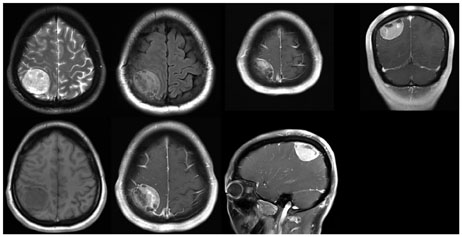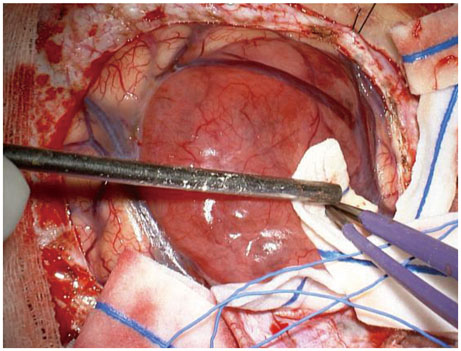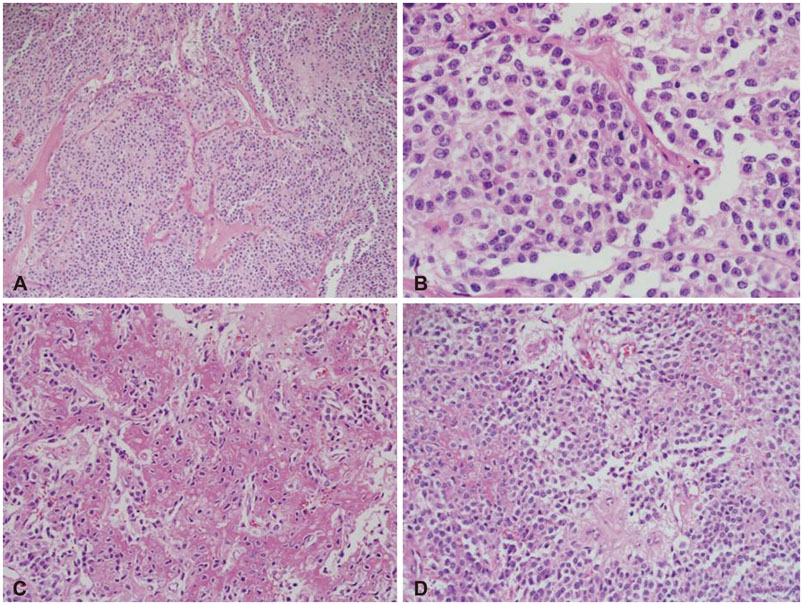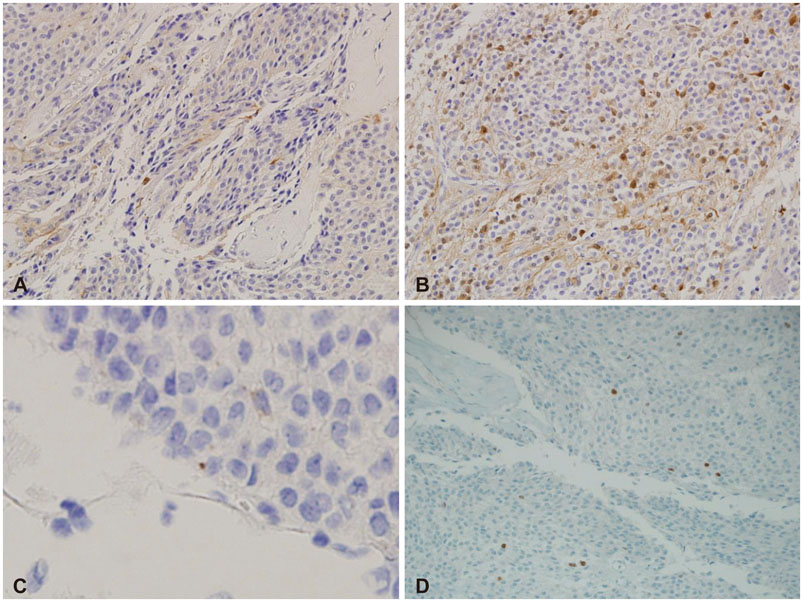Brain Tumor Res Treat.
2017 Oct;5(2):127-130. 10.14791/btrt.2017.5.2.127.
Extra-Axial and Clear Cell Type Ependymoma, Mimicking a Convexity Meningioma
- Affiliations
-
- 1Department of Neurosurgery, Seoul St. Mary's Hospital, College of Medicine, The Catholic University of Korea, Seoul, Koera. ssjeun@catholic.ac.kr
- 2Department of Hospital Pathology, Seoul St. Mary's Hospital, College of Medicine, The Catholic University of Korea, Seoul, Koera.
- KMID: 2396459
- DOI: http://doi.org/10.14791/btrt.2017.5.2.127
Abstract
- A 33-year-old woman presented with tingling and paresthesia on left extremity for 2 months. Magnetic resonance imaging revealed that the tumor was iso- and hypo-intensity on T1-weighted image, mixed iso- and high-signal intensity on T2-weighted images and heterogeneously enhanced with rim enhancement. Neither arachnoid cleft nor dural tail was certain but mass was located extra-axially so meningioma was suspected. During operation, tumor wasn't attached to dura at all but arachnoid attachment was seen. Pathologically, clear cell type ependymoma was confirmed. Details of diagnosis and treatment of this tumor is described.
Keyword
MeSH Terms
Figure
Reference
-
1. Youkilis AS, Park P, McKeever PE, Chandler WF. Parasagittal ependymoma resembling falcine meningioma. AJNR Am J Neuroradiol. 2001; 22:1105–1108.2. Mermuys K, Jeuris W, Vanhoenacker PK, Van Hoe L, D'Haenens P. Best cases from the AFIP: supratentorial ependymoma. Radiographics. 2005; 25:486–490.3. Fouladi M, Helton K, Dalton J, et al. Clear cell ependymoma: a clinicopathologic and radiographic analysis of 10 patients. Cancer. 2003; 98:2232–2244.
Article4. Hayashi K, Tamura M, Shimozuru T, et al. Extra-axial ependymoma–case report. Neurol Med Chir (Tokyo). 1994; 34:295–299.5. Koeller KK, Sandberg GD. Armed Forces Institute of Pathology. From the archives of the AFIP. Cerebral intraventricular neoplasms: radiologic-pathologic correlation. Radiographics. 2002; 22:1473–1505.6. Roncaroli F, Consales A, Fioravanti A, Cenacchi G. Supratentorial cortical ependymoma: report of three cases. Neurosurgery. 2005; 57:E192. discussion E192.
Article7. Oya N, Shibamoto Y, Nagata Y, Negoro Y, Hiraoka M. Postoperative radiotherapy for intracranial ependymoma: analysis of prognostic factors and patterns of failure. J Neurooncol. 2002; 56:87–94.8. Mansur DB, Perry A, Rajaram V, et al. Postoperative radiation therapy for grade II and III intracranial ependymoma. Int J Radiat Oncol Biol Phys. 2005; 61:387–391.
Article9. Wani NA, Mir F, Qayum A, Nazir P. Sacrococcygeal extraspinal ependymoma. Acta Neurochir (Wien). 2010; 152:917–918.
Article10. Ma YT, Ramachandra P, Spooner D. Case report: primary subcutaneous sacrococcygeal ependymoma: a case report and review of the literature. Br J Radiol. 2006; 79:445–447.
Article
- Full Text Links
- Actions
-
Cited
- CITED
-
- Close
- Share
- Similar articles
-
- Supratentorial Anaplastic Ependymoma Mimicking an Extra-Axial Tumor: A Case Report
- Metaplastic Meningioma Overspreading the Cerebral Convexity
- A Case of Supratentorial Intra-axial Ependymoma Showing Exophytic Growth
- A Case of Extra-axial Anaplastic Meningioma with Direct Orbital Extension
- Thoracic Intramedullay Clear Cell Meningioma





